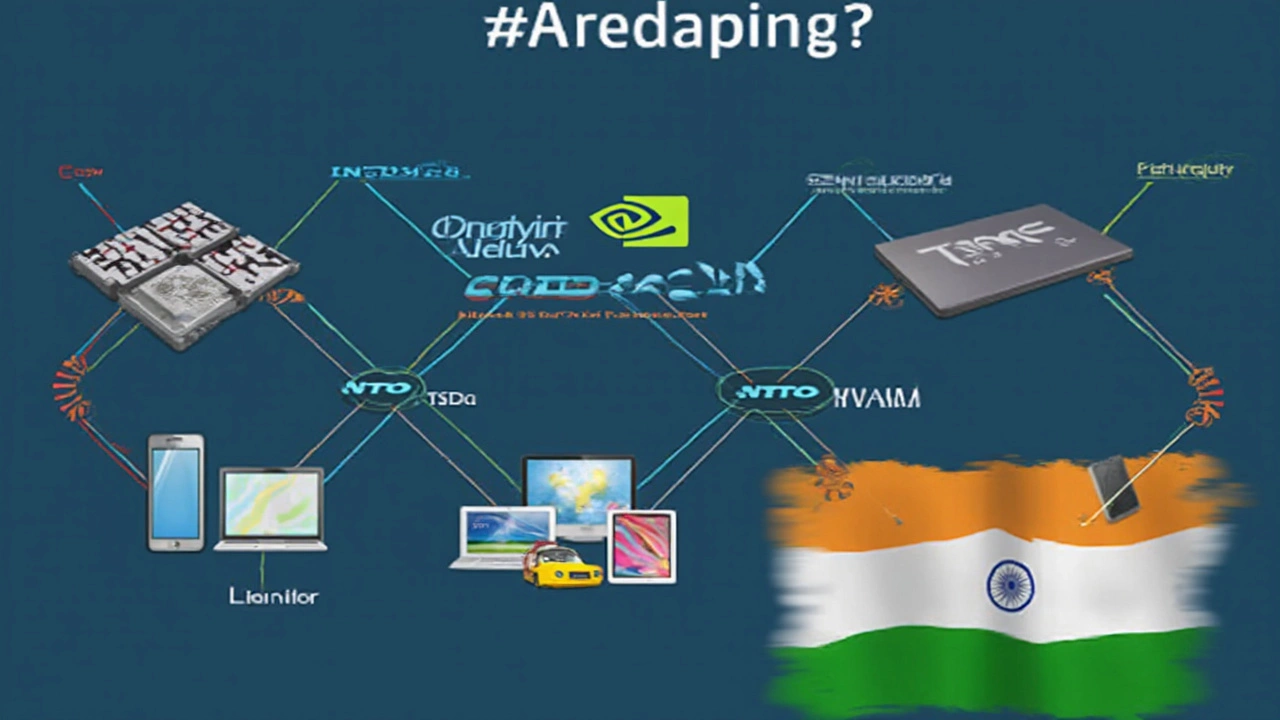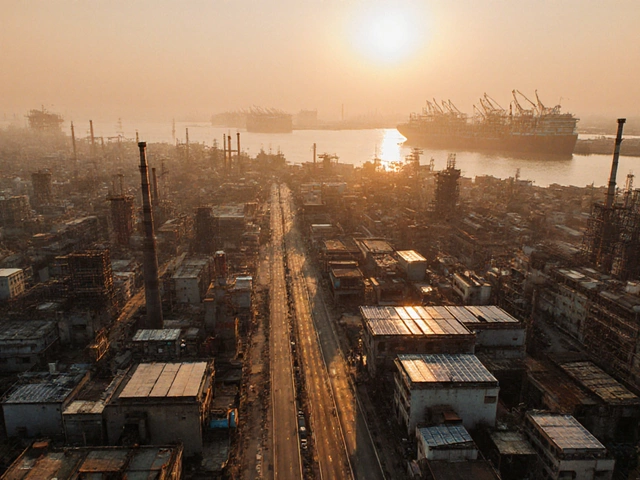Ever wondered why you keep hearing about Nvidia and TSMC in the same breath? It’s not just tech gossip—they’re basically the power couple behind the world’s fastest graphics cards. Nvidia doesn’t actually “make” its own chips. Instead, it comes up with the design, and then hands it over to TSMC, which has the machines and know-how to craft those sleek, powerful silicon brains found in everything from gaming rigs to AI servers.
This setup isn’t unique to Nvidia. A bunch of the biggest names in tech do the same thing, and honestly, it’s pretty smart. Setting up a giant factory to make modern chips costs billions—money even huge firms don’t want to burn through. By working with TSMC, Nvidia skips the headaches of manufacturing and sticks to what it’s good at: clever designs and making sure gamers (and, these days, AI researchers) get the next big leap in speed and power.
- Nvidia’s Business Model: Design, Not Manufacturing
- Why TSMC? The Role of the Chip Giant
- How Does This Impact Electronics in India?
- Chip Shortages, Prices, and What It Means for You
- Future Moves: Will Nvidia Ever Make Its Own Chips?
Nvidia’s Business Model: Design, Not Manufacturing
Nvidia is a designer, not a maker when it comes to chips. They cook up the blueprints for their graphics cards and AI processors, but they don’t own massive factories to turn those plans into reality. That’s pretty unusual if you look back a decade or two—Intel, for example, still owns and runs its own chip plants, which are called fabs. Nvidia? They went the “fabless” route.
What does this actually mean? They focus on the creative side: planning how billions of transistors connect, how graphics flows, and how their chip will beat the competition at speed or efficiency. Once their design is done, Nvidia sends the files to a company that specializes in building chips at an epic scale. That’s where TSMC comes in.
This approach lets Nvidia ramp up quickly when demand explodes. Got a new game console launching? Or AI data centers mushrooming up? They don’t need years to build a new factory—they just scale orders with their trusted manufacturing partner. Plus, they save a fortune by skipping factory overheads and maintenance.
Not having their own fabs also means Nvidia can tap into whatever production tech is hottest at the moment. They’re not stuck on last year’s machines; they can go straight to TSMC’s latest 5-nanometer process or whatever new cutting-edge tool comes next.
This fabless model has become standard playbook for a lot of chip designers. Qualcomm, AMD, even Apple go the same way. So, when you see “Made by Nvidia” on a graphics card, just remember—the brains were crafted in California, but the silicon muscle comes from across the ocean.
Why TSMC? The Role of the Chip Giant
If you look at Nvidia’s latest products, you’ll notice almost all of them connect back to a single place: TSMC, which stands for Taiwan Semiconductor Manufacturing Company. TSMC is not just big—they’re the world’s largest contract chipmaker, handling chip production for tech giants like Apple, AMD, and, of course, Nvidia.
Why does everyone keep coming back to TSMC? Their secret sauce is advanced manufacturing. They lead the world in making cutting-edge chips at tiny "nanometer" sizes. For example, Nvidia’s hot selling GeForce RTX 40 series chips use TSMC’s 4-nanometer process. That’s smaller than most viruses, but it means the chips can run faster and use less power.
TSMC also has mind-blowing consistency. They’ve invested billions into keeping up with the latest tech and making sure their production lines barely ever go down. That makes them dependable partners for companies that live and die by release dates. Here’s a quick rundown of just how dominant TSMC is in this game:
| Metric | TSMC (2024) |
|---|---|
| Global Foundry Market Share | 60%+ |
| Advanced Node Market Share (Sub-10nm) | 90%+ |
| Total Revenue (USD) | $69 Billion |
| Main Customers | Nvidia, Apple, AMD, Qualcomm |
For companies like Nvidia, working with TSMC means their latest gaming and AI chips are at the very front of what modern tech can do. If you’re curious why tech shortages or price hikes hit so hard when TSMC gets disrupted, this dominance is the reason. They’re the bottleneck and the kingpin all at once. Companies don’t just buy a service—they buy reliability, speed, and a slice of the most advanced chip tech in the world.
If you’re tracking electronics investments or looking out for supply chain risks, keep your eyes on TSMC’s moves. Whenever they upgrade or open a new plant, it can shake up the whole industry, including what’s going on with electronics manufacturing in India.

How Does This Impact Electronics in India?
Alright, here’s where things get interesting for anyone living or working in India’s tech scene. Most of the supercharged graphics cards and chips you find in Indian laptops, desktops, and even powerful workstations? Yup, those are designed by Nvidia and made by TSMC. Because there’s no massive local chip foundry matching TSMC’s scale yet, Indian electronics makers depend on this global supply network.
Let’s be real—high demand for Nvidia gear, paired with limited production slots at TSMC, means fewer chips make it to India. That’s why you sometimes see sudden price jumps or products going out of stock, especially during a chip crunch. Since Nvidia sends its orders to TSMC way before launch, supply chain hiccups anywhere between Taiwan and India hit our market hard and fast.
If you’re wondering about numbers, check this out:
| Year | Nvidia GPU Imports to India (units) | Average Market Price (INR) |
|---|---|---|
| 2021 | 1,500,000 | 24,000 |
| 2022 | 1,200,000 | 33,000 |
| 2023 | 1,800,000 | 27,000 |
Those dips and spikes? They line up with global chip shortages and shipping issues. For a lot of gamers, coders, and even factories here, it’s become a game of waiting it out or paying premium.
But it’s not just about buying fancy gear. India’s big push for ‘Make in India’ has created some buzz about local manufacturing, but right now, Nvidia still relies on TSMC, and getting high-end chips made here isn’t a thing yet. Still, there are signs of change—recent partnerships and investment announcements hint at local assembly plants and packaging, which might mean more stable pricing and faster access to new chips in the coming years.
Want to get your hands on the latest GPU or AI accelerator in India? Here’s what usually works:
- Watch launch dates and pre-book when you can—demand spikes quickly.
- Check multiple vendors; some get stock later than others because of staggered shipments from TSMC.
- Sign up for price alerts: discounts come up in short windows when supply briefly outpaces demand.
Bottom line: As long as Nvidia keeps buying from TSMC, and TSMC remains the world’s top chip foundry, India’s electronics market will ride the same global supply rollercoaster as everyone else.
Chip Shortages, Prices, and What It Means for You
If you tried buying a graphics card any time in the last few years, you know the pain. Prices shot through the roof, and finding a new card felt like winning the lottery. The main reason? Chip shortages. Since Nvidia relies on TSMC’s factories to make its chips, any hiccup at TSMC—like a supply crunch, power outage, or even a pandemic lockdown—meant fewer graphics cards to go around.
Let’s break down why this is such a big deal. The tech world doesn't just need chips for gaming PCs. Cars, smartphones, even washing machines now want those same high-end parts. So, every time something hits supply at a giant foundry like TSMC, everyone feels the squeeze. Nvidia’s new AI chips, for example, got so backed up that wait times stretched to months and bulk orders jumped up to 10 times the regular price.
To make this real, here’s what’s happened the past few years:
| Year | Typical GPU Price Markup (vs. MSRP) | Average Wait Time (Weeks) |
|---|---|---|
| 2021 | +200% | 12 |
| 2022 | +100% | 8 |
| 2023 | +40% | 4 |
| 2024 | +15% | 2 |
For folks in India, these problems just get bigger. Hardware may land months later than in the US or China. Import taxes and distributor markups only make prices steeper. So, a chip crunch overseas means you better be ready to hunt deals or choose older models.
If you’re hoping to avoid headaches next time shortages hit, here are some simple tips:
- Don’t wait for launches—grab deals on last-gen GPUs if the price is right.
- Check out local tech forums for distributor tips and group buys.
- Follow retailer restock alerts—timing is everything when supply is tight.
- Consider alternatives like used hardware, especially from trusted sellers.
At the end of the day, every new Nvidia chip starts life in a TSMC fab. If trouble brews in Taiwan, your shopping plans could get messy—so staying informed is your best tactic.

Future Moves: Will Nvidia Ever Make Its Own Chips?
Nvidia fans love to speculate, but as of now, Nvidia doesn’t run its own chip factories—and there’s no sign that’s about to change. The company sticks to what it does best: chip architecture and design. Building a factory isn’t just expensive (think tens of billions of dollars), it’s also risky. To rival TSMC’s level, Nvidia would need years and a small army of process engineers, not to mention flawless supply chains. Even Intel, which has made chips for decades, has stumbled recently trying to keep pace with the latest manufacturing tech.
Here’s a quick look at why Nvidia keeps outsourcing to top foundries instead of doing it all in-house:
- Cost: Setting up a cutting-edge chip fab can cost over $20 billion. TSMC spends this kind of money every year just on upgrades and new plants.
- Expertise: Advanced chip making is TSMC’s bread and butter—they’re really hard to beat. Their engineers are some of the best at squeezing more performance out of each generation.
- Speed: By working with TSMC, Nvidia avoids getting bogged down in manufacturing headaches. That lets it launch new products faster and adapt when demand shifts—super important for AI and gaming markets.
Here’s a table breaking down how things compare if Nvidia went solo:
| Factor | Nvidia's Current Model (Outsources to TSMC) | If Nvidia Ran Its Own Fabs |
|---|---|---|
| Cost | Pay TSMC per chip | Huge up-front and operating costs |
| Time to Market | Fast, short cycles | Slower, more red tape |
| Technological Risk | Low | Very high |
| Flexibility | Can pick the best foundry | Stuck with what it's built |
Rumors always pop up about Nvidia building something in the US or teaming up with Samsung or Intel for backup supply. As of 2025, these are just rumors—no official factory announcements from Nvidia. The company is quietly investing in strategic partnerships and maybe securing extra capacity, but sticking with the outsourcing model as its main play. For folks in the electronics world (especially in India), this means dependency on foundries like TSMC will stay the norm for a while. If you’re tracking the chip world, don’t expect Nvidia-branded factories anytime soon.










